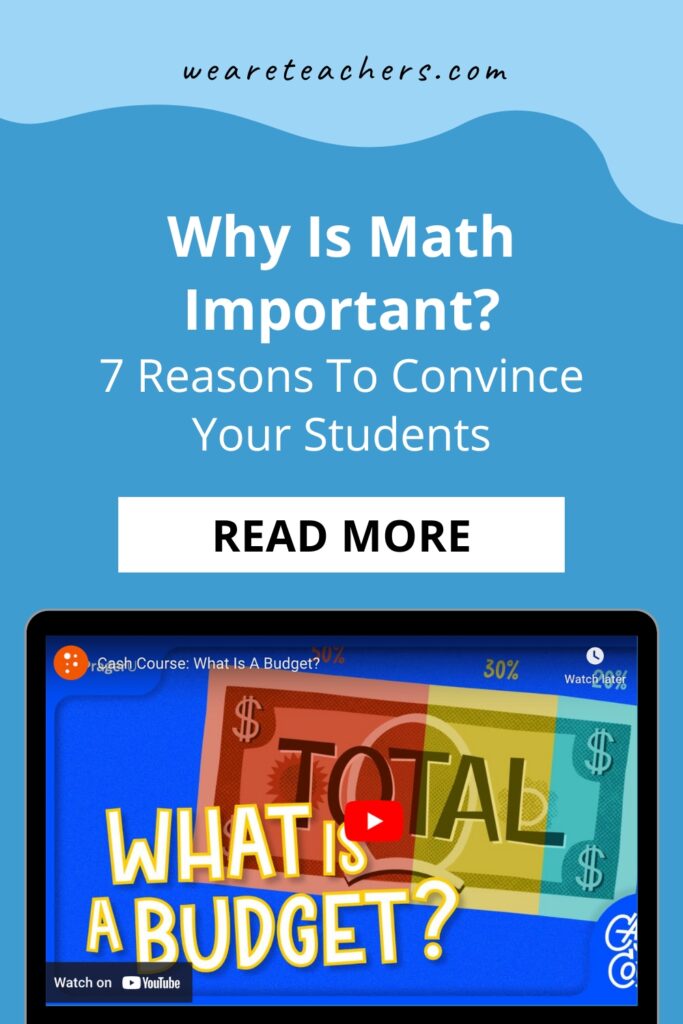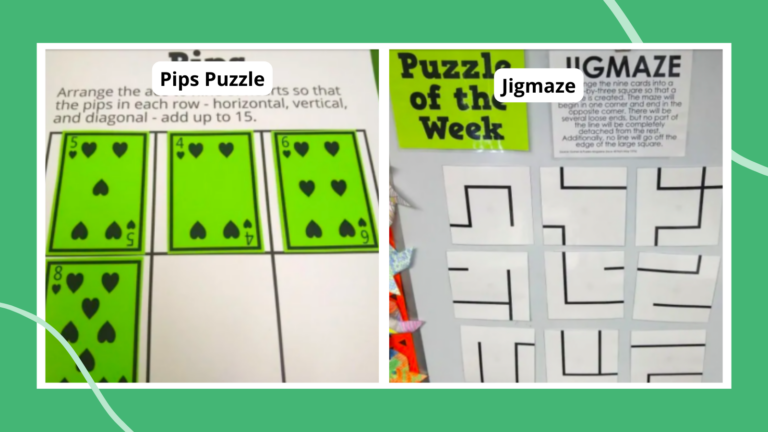It’s safe to say that any teacher who has taught math in any capacity has had a student inquire “When am I going to use this in real life?” As a former seventh grade math teacher, I’m here to tell you that my students loved asking this question. In fact, they eagerly anticipated the day that I didn’t have a clever response for them. Truthfully, sometimes I didn’t. I am indeed hard-pressed to think of a circumstance in which I would use two-step variable equations in my everyday life. However, I am sure some mathematician out there has an appropriate response. To be quite honest, oftentimes my response was something along the lines of “so you can be prepared for x concept that comes up in high school.”
In reflection, that’s not the best way to get students to actually care about learning math further than just getting a decent grade and moving on with life. In this day and age where instant gratification is the norm and critical thinking is the exception (someone had to say it!), more thoughtful and applicable explanations as to why students really should care about math is of vital importance. Teachers, here are relatable real-world examples to share with your students about how math is important. (Just a reminder to always watch and vet YouTube videos before sharing with your class.)
1. Enables savvy shopping
Math helps you get the best deal on the new sneakers you’ve been eying
Your students may not be paying for their food or clothing with their own hard-earned money yet. However, they’ll probably care more about stretching their money once they start getting summer jobs, earning money for doing chores, etc. A relatable situation where the favorable outcome is to spend less money is buying a product when it is discounted. For example, that Urban Outfitters dress is now discounted at 15% off—how much will the dress cost after the discount?
Further, what about sales tax? Buying the digital version of Speak Now (Taylor’s Version) for $12.99 doesn’t actually mean $12.99 (unless you happen to live in one of the five NOMAD states, but that’s beside the point), because there’s this thing called sales tax. In fact, if you live in California, you’ll be paying 7.25% sales tax in addition to the base price of the item. A well-informed shopper is a savvy shopper, and it’s cool to be savvy.
2. Promotes informed driving
Math makes driving safer
In my adult life, I’ve had more close calls than I care to admit when it comes to filling up my gas tank at the appropriate times. As I’ve pulled into a gas station coasting on fumes and thanking my lucky stars that I made it, I reflect on how if I’d paid just a bit more attention to the capacity of my gas tank, how many gallons of gas I’d put in previously, and how many miles I still had to go, I would have saved myself a lot of trouble and anxiety (and a lecture from my dad).
Some of this is related to being a responsible car owner. However, a lot is attributed to understanding the mathematics of a vehicle. Here are some other vehicle-specific items to discuss with your students when they tell you that perhaps you should have just filled up your gas tank sooner (thanks so much, kiddos): checking tire pressure (what the heck is PSI anyway?); speed limits in miles per hour or kilometers per hour; insurance premiums; safe distances; and self-driving cars. In plain terms, math makes driving safer. Check out this quick clip on MPG.
3. Fosters responsible spending and saving
Math helps you afford to go to college
Money, money, money, and all the things I “wish I’d known about before I became an adult in the ‘real world.'” Did I impulsively agree to a high-interest loan to afford my dream college? Yeah, I sure did. Am I having to deal with those consequences well into adulthood? Affirmative. The point here is not the fact that I did have to take out loans to afford college (lots of students will likely have to do the same), but that I did not understand what interest rates were and what they really meant for my financial future. Simple and compound interest are two financial topics that students as young as middle school age can begin to explore now, even if they won’t experience them in actuality for awhile. The simple fact is that if you borrow money, you’ll have to pay it back eventually and it will cost more than the amount you borrowed.
In addition to basic interest rates, engaging your students in a discussion about saving toward something and budgeting can really emphasize the importance of math when it comes to money. Credit cards are also relatable to this age group as they are likely looking forward to establishing credit and being able to afford a car, lease an apartment, and all of life’s other necessities. Theses topics are perfect for high schoolers, though they might be a little above middle schoolers’ heads. However, I did have some students already interested in crypto currency and investing, which are both heavily rooted in a foundational understanding of how math and money work together. Check out this video that walks through the importance of a budget and how to create one.
4. Informs conscientious food prep
Math helps you prepare enough food when you’re hanging out with friends
I myself am not a particularly adept cook or baker. But I do know just how important it is to measure accurately while following a recipe. What happens if you want to double a recipe? Triple it? Half it? Yeah, you’re going to need to know how to deal with fractions. For example, if one batch of cookies calls for 1/3 cup of flour and you want to double the recipe, you will need to multiply 1/3 by 2. Further, you’re going to need at least a rough idea of how other kinds of measurements work, such as teaspoons.
Plus, there are recipes that use customary measurements and others that use metric. Sounds confusing, but as you might expect, there is a mathematical way to convert from one to the other. If you’ve got a chunk of time to devote to this in class, I would show this whole video. However, skip to 9:17 to see a great example of converting units of measurement in the kitchen.
5. Composes music
Math helps you learn to play popular songs on a musical instrument
Music is built on math, literally. Luckily, I had the privilege of playing in my school’s band from fourth grade up through high school. I learned that time signatures, note duration, intervals, and so much more mathematical knowledge goes into composing and creating music. Frets on guitars are mathematically divided, and there are even college courses dedicated to music theory and the mathematics involved. Apparently, world-class drummers create complicated patterns called fractals using math. Also, patterns, patterns, patterns! Everything in music follows some sort of pattern. Ask your students how many of them play an instrument, sing, or write songs. They probably didn’t even realize that they’ve been using math this whole time. Show this clip about how students learn how to play popular songs on the piano by solving math equations.
6. Creates innovative cinema
Math makes it possible to create epic special effects
Did you watch Avatar in 3D at the movie theater? Well, 3D technology was developed using all kinds of complicated math whose foundations start in middle school. Being familiar with a coordinate plane, reflections and rotations, and geometric shapes is imperative to creating cinematic masterpieces. Creating special effects like fire and explosions is based on algorithms, and camera motion is dependent upon knowledge of angles. Check out this clip in which a Pixar animator discusses how math helps him do his job.
7. Develops critical thinking
Math helps make you better at resolving conflicts with friends and family
I’ve observed that sometimes when we teach math, we’re just looking for students to get the correct answer. Realistically, that’s often what we are required to do for state testing, report cards, etc. However, if we step back from that minute focus on arriving at an answer and look instead at the process used to get there, we’ve really captured why math is important. Learning math processes using critical thinking is inherently, in my opinion, the major goal of teaching students math in the first place. Teaching students how to think about math is more important than making sure they know how to do math. When students become strong critical thinkers, they set themselves up for success not just in school but also in life. Because critical thinking is the basis for conflict resolution, decision-making, attention to detail, and so many more important skills.
Looking for more ways to discuss math? Check out these 15 Exciting Career for Students Who Love Math.
Plus, get all the latest teaching tips and tricks by signing up for our free newsletters!


